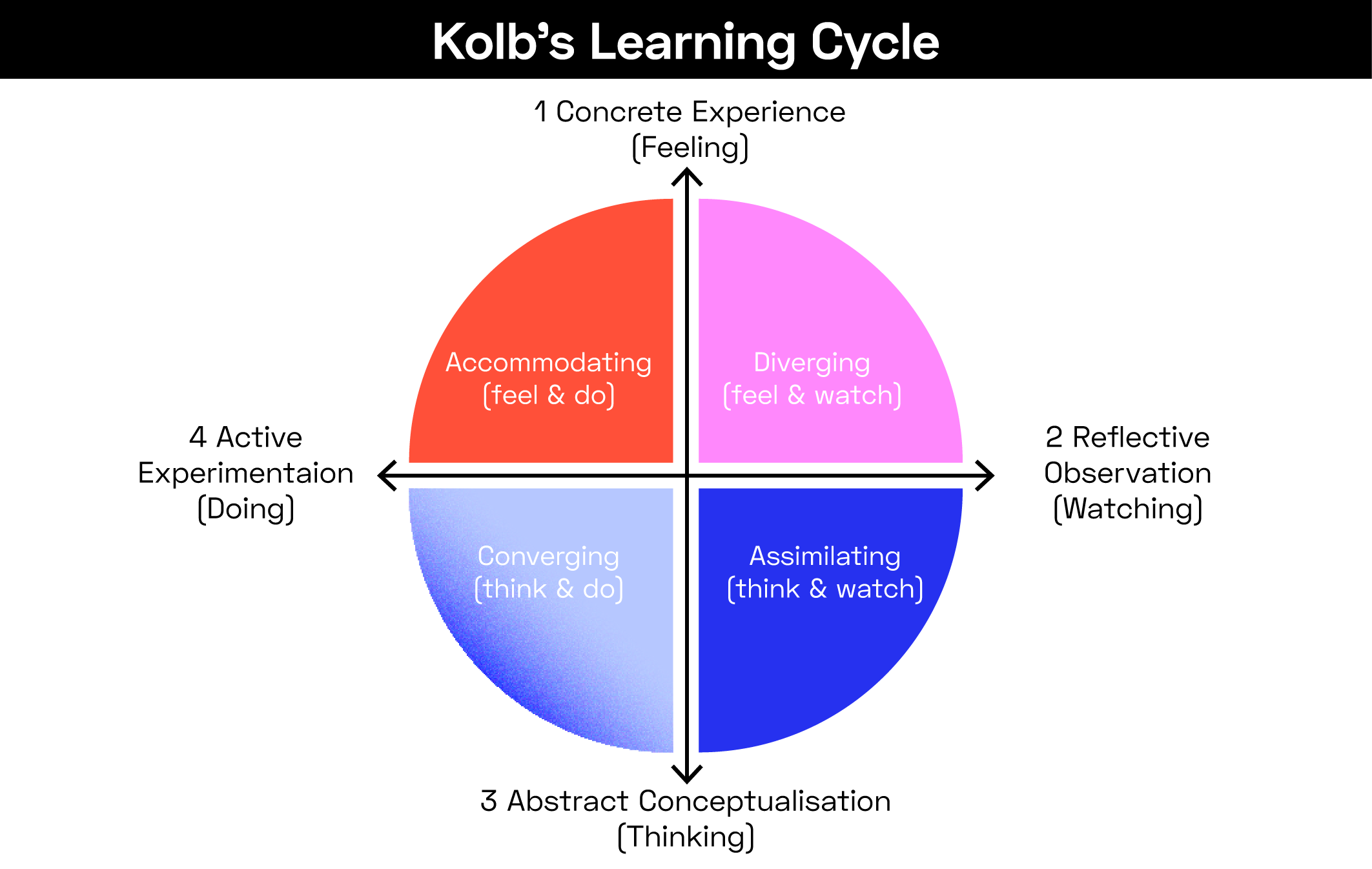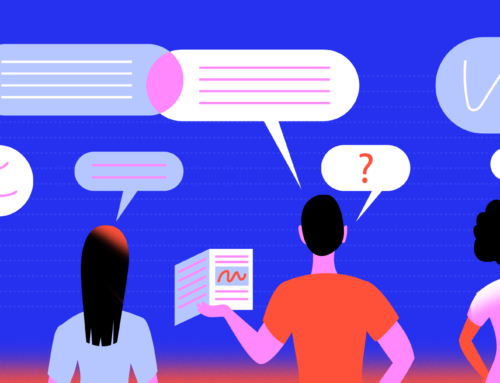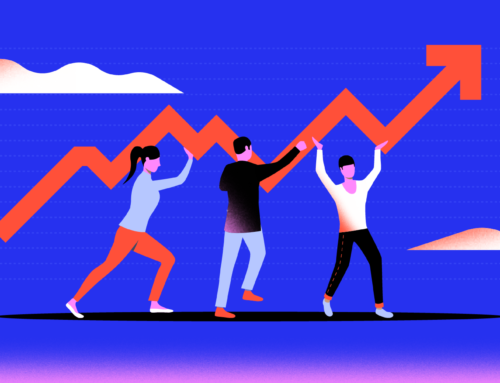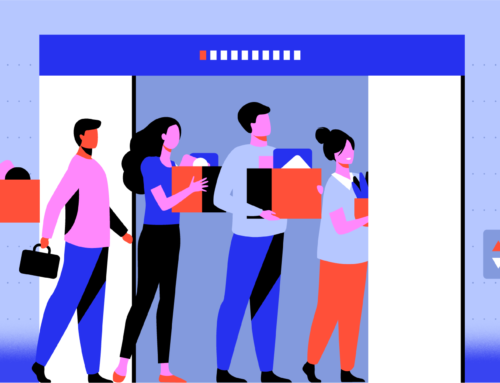Last Updated on November 10, 2021 – 7:31 am
Employee learning and development are essential for happy workplaces and successful businesses. Most companies and organizations understand its importance, which increases their willingness to invest in knowledge and skills growth.
No wonder that the corporate e-learning market is poised to grow by $37.80 bn during 2021-2025. Business leaders aim to establish a highly-skilled workforce of high-performers who understand their job roles, generate innovative solutions, and provide stellar customer service.
But to achieve that, regular training and learning programs might not be enough. In this ever-changing world fueled by digital transformation, talent development professionals should bridge the gap between education and experience.
According to McKinsey, experiential learning provides the best way to go beyond outmoded techniques and combine knowledge with practical skills. It’s the approach that combines intellectual comprehension and hands-on experience, allowing employees to adopt long-lasting abilities.
What is Experiential Learning?
Experiential learning (ExL) is an engaging process where participants learn by doing and reflecting on the overall experience.
Contrary to behavioral premises that suggest it’s possible to measure learning effectiveness by calculating how many facts a person learned, ExL perceives it as a less rigid process. Therefore, learning is no longer a mere acquisition of data but a permanent behavioral transformation.
Learners are in the center of the learning process, ensuring that the outcome depends on where they are, how they feel about their previous experiences, and where they see themselves in the future.
Thanks to that, experiential learning engages participants in a shared and active learning environment, where they assess content along the way. It’s what, according to McKinsey, makes it the most effective method of adult learning.
How can talent development professionals better understand the essence of experiential learning to implement it in their strategies?
David Kolb’s Experiential Learning Theory
David Kolb’s Experiential Learning Theory suggests that experience is crucial for the development of knowledge construction. Moreover, it proposes that learning emerges from active participation and discovery.
Kolb’s Experiential Learning Theory is split into two parts. The first one explains that learners go through a four-stage cycle, during which they transform their knowledge into experience.

The four stages of Kolb’s experiential learning are:
- Concrete Experience (CE) – During this phase, participants actively engage in an activity or assignment and, initially, they tend to rely on their feelings.
- Reflective Observation (RO) – After involving themselves in a concrete experience, learners take time to reflect on this task and pose questions.
- Abstract Conceptualization (AC) – At this stage, learners interpret the experience and use logic, ideas, and theories to tackle the problem.
- Active Experimentation (AE) – The final phase represents testing, and it’s when learners start using the acquired knowledge in real life.
The second part of Kolb’s theory centers around learning styles and the cognitive processes that enable learners to obtain knowledge. The principal idea is that learners can transform experience into knowledge and integrate new information with their existing understanding.
Hence, Kolb suggests that memorization and learning aren’t the same, as the former doesn’t add a genuine value to the learner. The advantage of this type of learning is that participants can use their preferred learning style in the process and develop abilities in specific areas, allowing them to become more well-rounded learners.
Therefore, Kolb’s experiential learning is a stellar foundation for workplace training and employee development. It ensures workers control their learning process and growth thanks to learning in the same way they approach life.
But how do you transform experience into knowledge in a real-life work environment?
How to Apply Experiential Learning in the Workplace?
Experiential learning requires developing a program that takes employees on a journey through a real-life environment. However, it doesn’t necessarily have to unfold in an office.
For instance, you can use a capability-development center that mirrors your workplace setting. The essential part is to introduce guided discussions, simulated situations, and role-playing workshops or sessions.
That way, participants can try new methods, techniques, and tools that encourage them to practice new skills and decision-making. Remember to provide continuous feedback that highlights the effectiveness of the skills they acquire in the process.
Thus, establish a safe environment where participants feel comfortable experimenting and learning from observations they gained. Track the development progress by scheduling regular meetings and conversations.
Use these time blocks to encourage conversations between employees and their managers, coaches, or mentors. There, they can reflect on their experience and understand what challenges or issues they faced and how they can use the newly-acquired knowledge.
Tailor your experiential learning program to your industry and business objectives to establish relevant on-the-job experiences. Thus, that makes setting goals for employees easier as they’re specific and relevant.
Here are a few employee goals and objectives examples:
- Improve leadership skills and decision-making – If your employees struggle handling demanding responsibilities and being in charge, help them improve their leadership capabilities. Create an environment where they’ll have to be in leadership roles and understand the complexity of assignments that managers and chief officers face.
- Teach employees how to choose relevant channels and tools to enhance the digital marketing strategy – Use an experiential learning simulation to help your employees step into the role of chief marketing officers and run an e-commerce store. As a result, workers will undergo a thorough training session that teaches them how to plan and carry out a digital marketing strategy.
- Strengthen soft skills and problem-solving – Ensure your new customer support representatives can handle incoming calls by including a simulation into their onboarding process. Face your employees with the most frequent customer complaints and have them use their wits and emotional intelligence to address these issues.
- Compelling on-the-job assignments – Give employees relevant tasks and projects but go beyond their job descriptions. If you want workers to obtain new abilities and knowledge, create engaging undertakings that encourage them to leave their comfort zone. Stretch assignments are critical for upskilling because they place employees in new situations and stimulate their growth.
Remember that Kolb’s experiential learning highlights the importance of learning styles and adjusting the process to the participants. Simulations and role-playing aren’t the only techniques you can leverage.
Storytelling is ideal for visual learners. For example, Beko used interactive explainer videos to guide their potential customers through their innovative TV technologies. On the other hand, Allianz used videos from three different perspectives to outline the onboarding process for their new employees.
Conclusion
Kolb’s experiential learning is fun, interactive, and engaging, making it easy to implement across all company levels. It allows employees and leaders to immerse themselves in shared activities that mimic real-life workplace situations, acquire new skills, and use their prior knowledge.
Thanks to a connection to one’s day-to-day challenges, experiential learning enables participants to apply their abilities in a safe environment and adopt principles and experiences they can use in the real world.






Leave A Comment